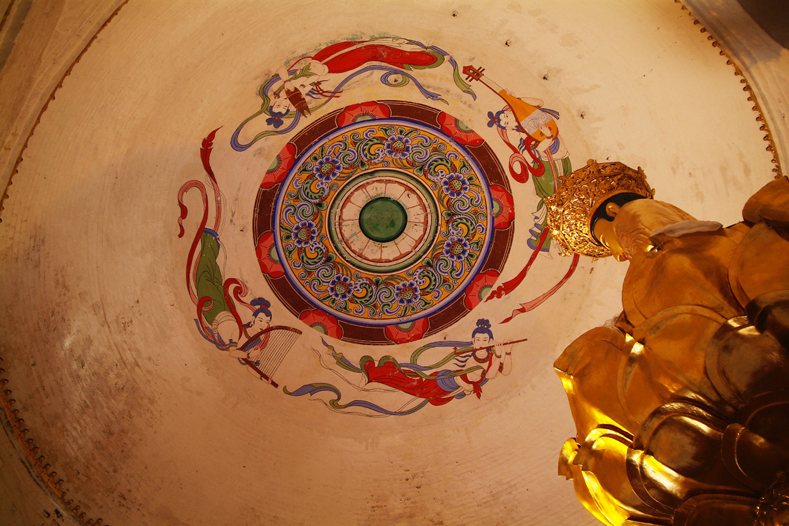A Brief History of the Development
In Mt. Emei, Confucianism, Buddhism and Taoism coexisted and developed respectively during Mt. Emei’s long history of development. Buddhism regards Mt. Emei as the “Great Bright Mountain” (see The Shurangama Sutra and The Avatamsaka Sutra); Taoism calls it “The Seventh Fairyland” (see Records of Abodes of the Immortals and Seven Taoist Books in a Cabinet) Therefore, Mt. Emei enjoys the reputation as “Taoism Fairyland and Buddhism Land”.
Buddhism and Taoism developed themselves against each other in Mt. Emei. However, affected by emperors’“suppressing Taoism to promote Buddhism” or “Wiping out Buddhism to worship Taoism” in the past, together with their respective development, their social status and influence are quite different. The general trend was the increasingly flourishing Buddhism and the decline of Taoism. From the Tang Dynasty (618-907) and Song Dynasty (960-1279) to the end of the Ming Dynasty(1368-1644), temples rose up and eminent monks came out in succession. Seeing the boom of Buddhism, a lot of Taoist priests got off their yellow hats and Taoist robes and put on the monk’s gowns. Some left Emei to find another fairyland, while others resumed secular life. Under such situation, some Taoist leaders developed Mt. Er’e to compete with Buddhism. With the saying that “Buddhism has Mt. Da’e, but Taoism has Mt. Er’e”, they gradually constructed Qingxu Taoist Palace, Chongxiao Pavilion, Zizhi Cave, Xuling Fairyland, etc. Since the Taoist palaces were grand, Taoist priests concentrated in Mt. Er’e soon, leaving Mt. Da’e the way-place of Samantabhadra. The only Taoist temple in Mt. Da’e was Chunyang Temple, but it was only an empty title as Buddhist statues were worshiped in the main hall, and only the Taoist immortal Lv Dongbin’s walking, sitting and lying statues remained.
In the Ming Dynasty (1368-1644) and Qing Dynasty (1644-1912), Buddhism developed soundly in Mt. Emei. Monks came and left; temples were built on each peak; and Samantabhadra was worshiped.
Due to the federal governors’ promotion and suppression, the competence between Taoism and Buddhism cannot be avoided; however, they can still coexist. In the Ming Dynasty (1368-1644), Confucianism, Buddhism and Taoism once mixed together, with the precursor of Baoguo Temple--Huizong Hall as a typical example of such mixture. When were Buddhism and Taoism introduced to Mt. Emei? It is hard to know the exact time as the books and records are old and vague. But as with Buddhism, there are two explanations: in the Eastern Han Dynasty (25-220) or Western Jin Dynasty (265-316). Although proofs are found, common view can hardly be reached. But from historical aspect, the former saying has more powerful arguments.
Analyzing the historical materials, the development of religion in Mt. Emei started from Confucian sacrifice, then Taoism, Buddhism and Catholicism. Catholicism developed in the low-elevation area, and now, there are a few Catholics among the villagers.

